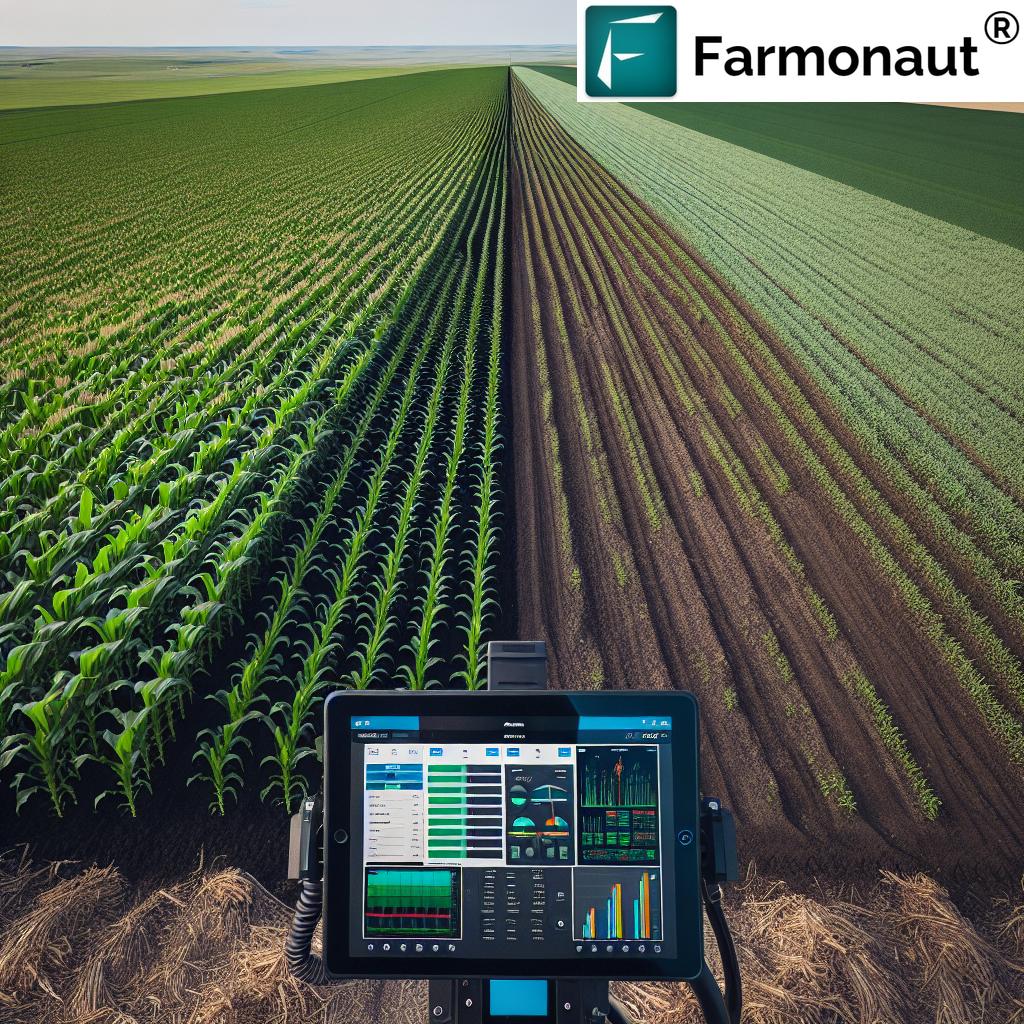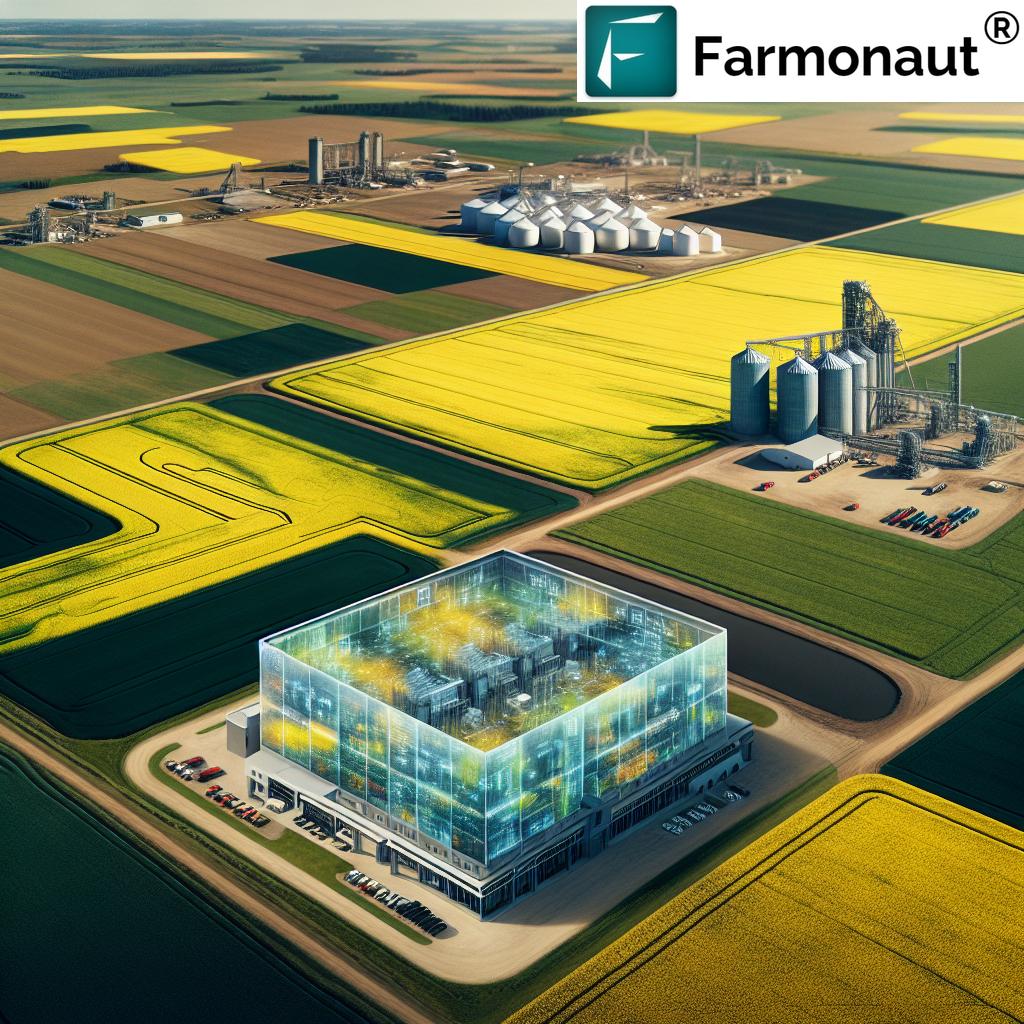Revolutionizing Ontario’s Agri-Food Sector: How Digital Agriculture is Addressing Labor Shortages
“Ontario’s $350,000 funding initiative aims to address labor shortages in the agricultural sector and develop a skilled workforce.”
As we delve into the transformative landscape of Ontario’s agri-food sector, we’re witnessing a remarkable shift in how the industry tackles one of its most pressing challenges: labor shortages. In this comprehensive exploration, we’ll uncover how digital agriculture is revolutionizing the way we approach workforce development and sustainable farming practices in the heart of Canada’s agricultural powerhouse.
The Current State of Ontario’s Agricultural Labor Market
Ontario’s agricultural sector has long been a cornerstone of the province’s economy, but in recent years, it has faced significant hurdles in maintaining a robust workforce. The growing demand for agricultural jobs, coupled with changing demographics and evolving farming practices, has created a perfect storm of labor shortages across various subsectors.
- Greenhouse operations struggling to find skilled workers
- Crop management facing challenges in attracting tech-savvy employees
- Horticulture industry grappling with seasonal labor fluctuations
These challenges have prompted a crucial investment to develop a skilled workforce that can meet the demands of modern agriculture. The $350,000 funding initiative is set to address these issues head-on, paving the way for a more resilient and efficient agri-food sector.
Digital Agriculture: The Game-Changer in Workforce Development
At the forefront of this agricultural revolution is digital agriculture, a suite of technologies and practices that are reshaping how we grow, manage, and harvest crops. This innovative approach is not only enhancing productivity but also creating new job opportunities and skills requirements within the sector.
Farmonaut’s agtech solutions are playing a pivotal role in this transformation, offering digital agriculture tools that enhance farm labor management and efficiency. By leveraging cutting-edge technology, we’re seeing a shift in the way farms operate and how workers interact with agricultural processes.
[Include the image with id 27531 here]
Key Components of Digital Agriculture in Ontario
- Precision Farming: Utilizing GPS-guided machinery and drones for precise planting and harvesting
- Data Analytics: Employing big data to make informed decisions about crop management and resource allocation
- Internet of Things (IoT): Connecting farm equipment and sensors for real-time monitoring and automation
- Artificial Intelligence: Implementing AI-driven systems for crop health assessment and yield prediction
These technological advancements are not only improving farm productivity but also creating a demand for a new breed of agricultural workers who are comfortable with digital tools and data-driven decision-making.
The $350,000 Investment: A Closer Look
The substantial funding allocated to address labor shortages in Ontario’s agricultural sector is a testament to the government’s commitment to nurturing a thriving agri-food industry. This investment is strategically designed to tackle multiple facets of the workforce challenge.
Key Objectives of the Funding Initiative
- Creating a comprehensive labor data framework
- Developing tailored action plans for various agricultural subsectors
- Implementing skills training programs to upskill existing workers and attract new talent
- Fostering collaboration between educational institutions and agribusinesses
By focusing on these areas, the initiative aims to create a more resilient and adaptable workforce that can meet the evolving needs of Ontario’s agricultural landscape.
The Role of Farmonaut in Ontario’s Agricultural Transformation
As we navigate this exciting period of change, Farmonaut’s innovative agtech solutions are at the forefront of driving efficiency and sustainability in farm operations. Our platform offers a range of tools that are particularly relevant to Ontario’s efforts in addressing labor shortages and enhancing agricultural productivity.
Key Features of Farmonaut’s Platform:
- Satellite-based crop health monitoring for informed decision-making
- AI-powered advisory systems for optimized farm management
- Resource management tools to improve efficiency and reduce waste
- Blockchain-based traceability for enhanced supply chain transparency
These technologies not only streamline farm operations but also create new job roles that require a blend of agricultural knowledge and technological expertise.
[Include the Youtube video with id ‘B9K9IW0gy2Q’ here]
To explore how Farmonaut can revolutionize your agricultural operations, visit our web application or download our mobile apps:
[Include the Android App Button Image here]
[Include the iOS App Button Image here]
Transforming the Agricultural Job Market
The integration of digital agriculture is reshaping the job market within Ontario’s agri-food sector. We’re seeing a shift from traditional farming roles to positions that require a blend of agricultural knowledge and technological skills.
Emerging Job Roles in Digital Agriculture
- Precision Agriculture Technicians
- Agricultural Data Analysts
- Farm Automation Specialists
- AgTech Software Developers
- Drone Operators for Crop Monitoring
These new career paths are not only attracting a younger, tech-savvy generation to agriculture but also providing opportunities for existing workers to upskill and adapt to the changing landscape.
Skills Training and Education Initiatives
A critical component of the $350,000 funding initiative is the development of comprehensive skills training programs. These programs are designed to bridge the gap between traditional agricultural practices and the digital future of farming.
Key Focus Areas for Skills Development
- Digital Literacy: Enhancing workers’ abilities to use farm management software and digital tools
- Data Analysis: Training in interpreting and applying insights from agricultural data
- Precision Agriculture Techniques: Educating on the use of GPS-guided machinery and sensor technologies
- Sustainable Farming Practices: Integrating environmental considerations into modern agricultural methods
By investing in these skills, Ontario is preparing its agricultural workforce for the challenges and opportunities of the future, ensuring the sector remains competitive and sustainable.
[Include the Youtube video with id ‘vRX9G9JALwc’ here]
“The project focuses on creating a comprehensive labor data framework and tailored action plans for various agricultural subsectors.”
Addressing Labor Shortages Through Technology
One of the most significant impacts of digital agriculture is its ability to address labor shortages by improving efficiency and automating certain tasks. This not only helps to mitigate the effects of workforce scarcity but also allows existing workers to focus on higher-value activities.
Technological Solutions to Labor Challenges
- Automated Irrigation Systems: Reducing the need for manual watering and monitoring
- Robotic Harvesters: Assisting with labor-intensive harvesting tasks
- AI-Powered Crop Management: Optimizing resource allocation and reducing manual intervention
- Remote Monitoring: Allowing farmers to oversee operations from a distance, reducing on-site labor requirements
These technologies, many of which are available through Farmonaut’s platform, are helping Ontario’s farms do more with less, addressing labor shortages while improving overall productivity.
The Impact on Different Agricultural Subsectors
The $350,000 funding initiative recognizes that different areas of agriculture face unique challenges and opportunities when it comes to workforce development. Let’s explore how digital agriculture is transforming various subsectors within Ontario’s agri-food industry.
| Agricultural Subsector | Traditional Challenges | Digital Solutions & Benefits |
|---|---|---|
| Greenhouse Operations | Labor-intensive plant care, climate control issues | Automated climate systems, IoT sensors for plant health monitoring |
| Crop Management | Manual monitoring, resource-intensive practices | Remote sensing, precision agriculture techniques |
| Horticulture | Seasonal labor fluctuations, quality control | AI-powered sorting systems, predictive harvest planning |
| Livestock Farming | Time-consuming animal monitoring, feed management | Wearable tech for animal health, automated feeding systems |
| Viticulture | Labor-intensive pruning and harvesting | Robotic pruning assistants, aerial imaging for vineyard management |
This table illustrates how digital solutions are addressing specific challenges across different agricultural subsectors, demonstrating the versatility and impact of technology in transforming Ontario’s farming landscape.
[Include the image with id 27532 here]
Sustainable Farming Practices and Digital Agriculture
The integration of digital agriculture is not only addressing labor shortages but also promoting more sustainable farming practices. This dual benefit is crucial for the long-term viability of Ontario’s agri-food sector.
Key Sustainability Improvements
- Precision Resource Application: Reducing waste and environmental impact
- Smart Water Management: Conserving water through data-driven irrigation
- Integrated Pest Management: Minimizing chemical use through targeted interventions
- Energy-Efficient Operations: Optimizing energy consumption in farm buildings and machinery
These sustainable practices not only benefit the environment but also contribute to the economic resilience of farms, making agricultural careers more attractive to a new generation of environmentally conscious workers.
The Future of Ontario’s Agri-Food Workforce
As we look to the future, the $350,000 investment in workforce development is set to catalyze significant changes in Ontario’s agricultural labor market. We anticipate seeing:
- A more diverse and skilled workforce equipped to handle the challenges of modern agriculture
- Increased adoption of digital technologies across all farm sizes and types
- Greater collaboration between the tech sector and traditional farming communities
- Enhanced food security through more efficient and resilient agricultural practices
The transformation of Ontario’s agri-food sector through digital agriculture and targeted workforce development is not just addressing current labor shortages—it’s paving the way for a more innovative, sustainable, and prosperous future for the industry.
[Include the Youtube video with id ‘aYUVo5u9YvE’ here]
Embracing the Digital Agriculture Revolution with Farmonaut
As we’ve explored the transformative potential of digital agriculture in addressing Ontario’s agricultural labor shortages, it’s clear that technology plays a crucial role in shaping the future of farming. Farmonaut’s comprehensive suite of agtech solutions is at the forefront of this revolution, offering tools that not only enhance productivity but also create new opportunities for workforce development.
Our platform provides:
- Real-time crop health monitoring using satellite imagery
- AI-driven advisory systems for optimized farm management
- Resource management tools to improve efficiency and sustainability
- Blockchain-based traceability for enhanced supply chain transparency
By leveraging these technologies, farms in Ontario can streamline their operations, reduce labor-intensive tasks, and focus on developing a skilled workforce capable of managing high-tech agricultural systems.
To explore how Farmonaut can revolutionize your farming operations and contribute to addressing labor challenges, visit our web application or access our API for custom integrations:
API Access: https://sat.farmonaut.com/api
API Developer Docs: https://farmonaut.com/farmonaut-satellite-weather-api-developer-docs/
[Include the App Button Image here]
Conclusion: A New Era for Ontario’s Agriculture
The $350,000 funding initiative to address labor shortages in Ontario’s agricultural sector marks the beginning of a new era in farming. By embracing digital agriculture and investing in workforce development, Ontario is positioning itself at the forefront of agricultural innovation.
As we move forward, the integration of technologies like those offered by Farmonaut will be crucial in:
- Creating rewarding and diverse career opportunities in agriculture
- Enhancing farm productivity and efficiency
- Promoting sustainable farming practices
- Ensuring food security for future generations
The transformation of Ontario’s agri-food sector is not just about addressing current labor shortages—it’s about building a resilient, innovative, and sustainable agricultural industry that will thrive for years to come.
[Include the Youtube video with id ‘YPZJ62YQsZY’ here]
FAQ Section
Q: How is digital agriculture addressing labor shortages in Ontario?
A: Digital agriculture is addressing labor shortages by automating routine tasks, improving efficiency through data-driven decision-making, and creating new job roles that attract a tech-savvy workforce to the agricultural sector.
Q: What types of new jobs are emerging in Ontario’s agricultural sector due to digital agriculture?
A: New job roles include precision agriculture technicians, agricultural data analysts, farm automation specialists, AgTech software developers, and drone operators for crop monitoring.
Q: How does the $350,000 funding initiative aim to develop the agricultural workforce?
A: The initiative focuses on creating a comprehensive labor data framework, developing tailored action plans for various subsectors, implementing skills training programs, and fostering collaboration between educational institutions and agribusinesses.
Q: What role does Farmonaut play in Ontario’s agricultural transformation?
A: Farmonaut provides advanced agtech solutions such as satellite-based crop monitoring, AI-powered advisory systems, and resource management tools that help farms improve efficiency, reduce labor-intensive tasks, and promote sustainable practices.
Q: How is digital agriculture promoting sustainable farming practices in Ontario?
A: Digital agriculture promotes sustainability through precision resource application, smart water management, integrated pest management, and energy-efficient operations, all of which reduce waste and environmental impact.
Explore Farmonaut’s Solutions
Ready to embrace the future of agriculture and address labor challenges with innovative technology? Discover Farmonaut’s range of solutions tailored for modern farming needs:
By leveraging Farmonaut’s cutting-edge technology, Ontario’s agricultural sector can navigate the challenges of labor shortages while paving the way for a more efficient, sustainable, and prosperous future in farming.













